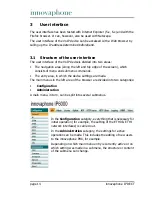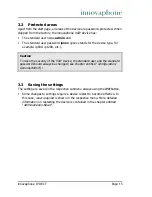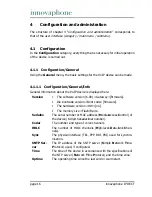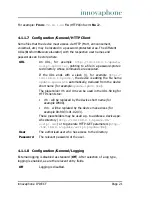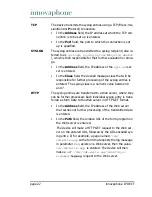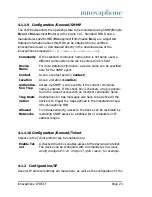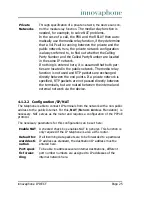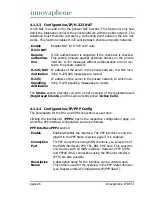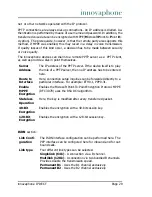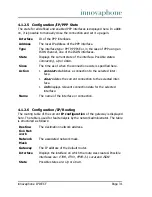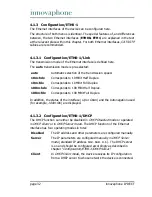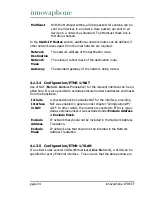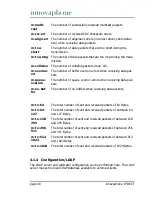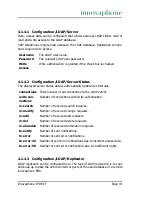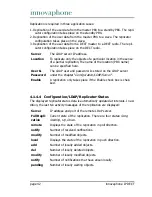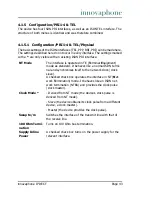
page 28
innovaphone IP DECT
Authentication
section:
The PPP protocol allows reciprocal authentication (inbound/outbound). Generally
speaking, for inbound connections, only the
inbound
authentication is required,
for
outbound
connections, only the outbound authentication. But it can also
happen that an authentication is required both from the client and from the ser-
ver.
PPPOE
section:
Here, the interface can be configured as a PPPoE client (for example, for DSL).
PPTP
section:
This operating mode applies for inbound and outbound calls. The PPTP (Point-
to-
P
oint
T
unneling
P
rotocol) implements private VPN connections via the Inter-
No IP Hea-
der Com-
pression
The VoIP devices support the compression of voice data
along the PPP link using the
RTP header compression
method (RFC 2508, 2509). This drastically reduces the requi-
red bandwidth for VoIP calls. To suppress this, the
No IP
Header compression
check box must be enabled.
Adapt to
Cisco PPP
peers
Try the
Adapt to Cisco PPP peers
option if a Cisco router is
used at the remote location and problems arise in the trans-
mission of voice data.
Outbound
User /
Password
Required for outbound connections. For example, the name of
the DSL provider or the DSL user ID of the remote party
(1564863maxmuster.1und1.de, 1564863maxmuster@t-
online.de), or the Inbound User / Password of the remote
party.
Inbound
User /
Password
Required for inbound connections. For example, the Outbound
User / Password of a different gateway.
DSL Provi-
der (Access
Concentra-
tor)
The DSL modem name. Since several modems can occur in a
network, a broadcast is sent for identification.

